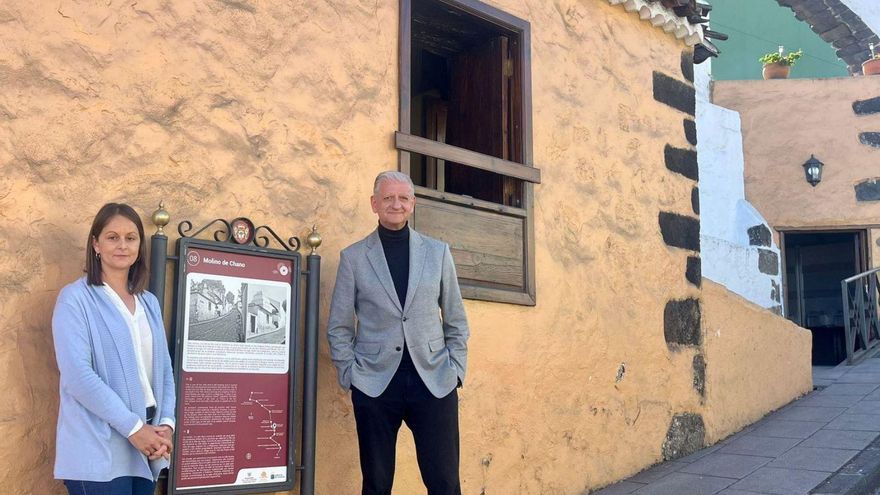
The Orotava mill route now showcases new informational panels along the way that will enhance the visit to these significant infrastructures, allowing visitors to freely explore them individually or in groups. The mills of Orotava are part of the Cultural Heritage Site (BIC) known as the Mill Aqueduct, which holds the title of Ethnological Site.
The mills are one of the most representative landmarks of the municipality of Orotava, serving as a crucial element of a hydraulic system established since the 16th century. The distribution of lands after the conquest and the progressive urban development of the Villa are largely due to the water richness of the area. The water from the sources of Aguamansa was used as hydraulic power, and leveraging the terrain slope from Camino de la Sierra to the back of Casa de Lercaro, it powered a sawmill and twelve mills. This also laid the foundation that shaped the urban configuration of this northern town.
Out of the twelve original mills, ten are still preserved today, with only two of them operational, though powered by electricity rather than water. These are complemented by other emblematic sites such as the cultural space of Los Lavaderos de San Francisco or the Camino de La Sierra. These mills are a major tourist attraction in the municipality, even listed in the Industrial Tourism Guide of Spain published by the Association of Industrial Tourism Operators. Recognized as one of the key identities of the Orotava Villa, they were declared a Cultural Heritage Site with the title of Ethnological Site, under Decree 92/2006, dated July 4, by the Government of the Canary Islands.
Mayor Francisco Linares, after visiting the route, praised the installation of these panels, supported by the Government of Canary Islands. “In this way, residents, students, and visitors can explore it individually or together and have all the necessary information at hand,” he said, adding, “It also serves as an educational offer, hoping that educational institutions make use of it to bring students closer to their local heritage and understand the history of the Villa.” The Orotava mill route, according to Linares, is “a journey that connects with the past, present, and future.” “It is a space to enjoy the historical and cultural heritage, to learn about the importance of water, and to appreciate the beauty of traditional architecture.”
Fifteen panels have been installed, also available in English and French, featuring a map of the route indicating the different stations along the itinerary and the exact location of the visitor, as well as an image of the place, details, and history of each space. The starting point is at Camino de la Sierra, which still retains much of its original cobblestone pavement, and continues through the mills of Cruz Verde, Calle Cubo Alto, La Magnolia, San Jose, Cuatro Esquinas, Josefina, Chano, the cultural space of Los Lavaderos, and the mills of San Francisco, La Máquina, and Casa Lercaro. The Josefina Mill is owned by the municipality and is expected to host an interpretative centre for the route, a project currently in progress.















